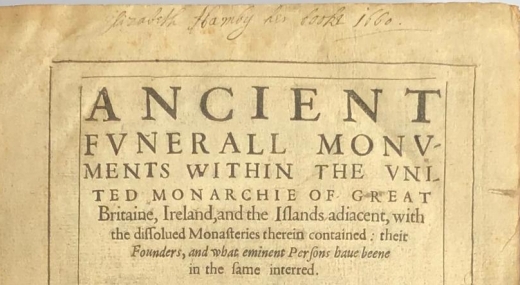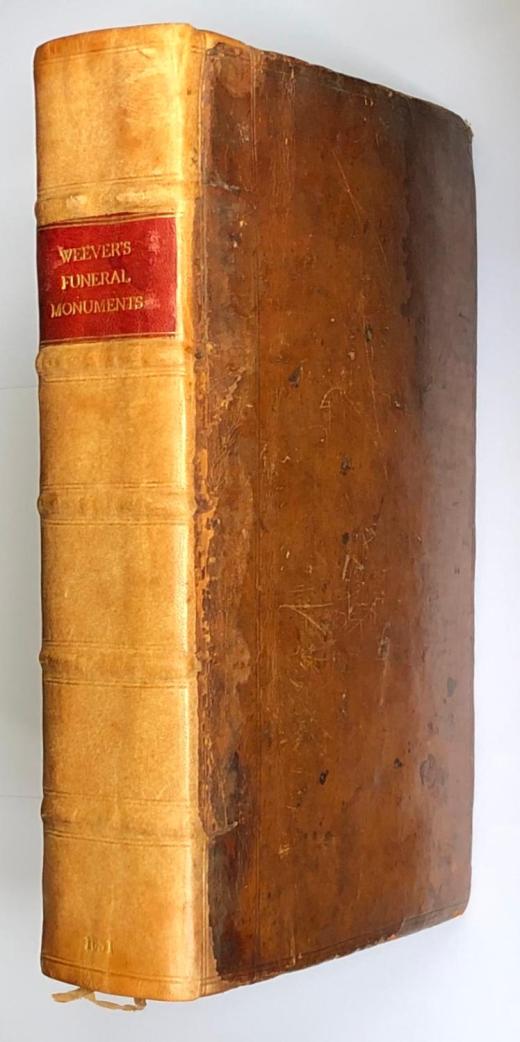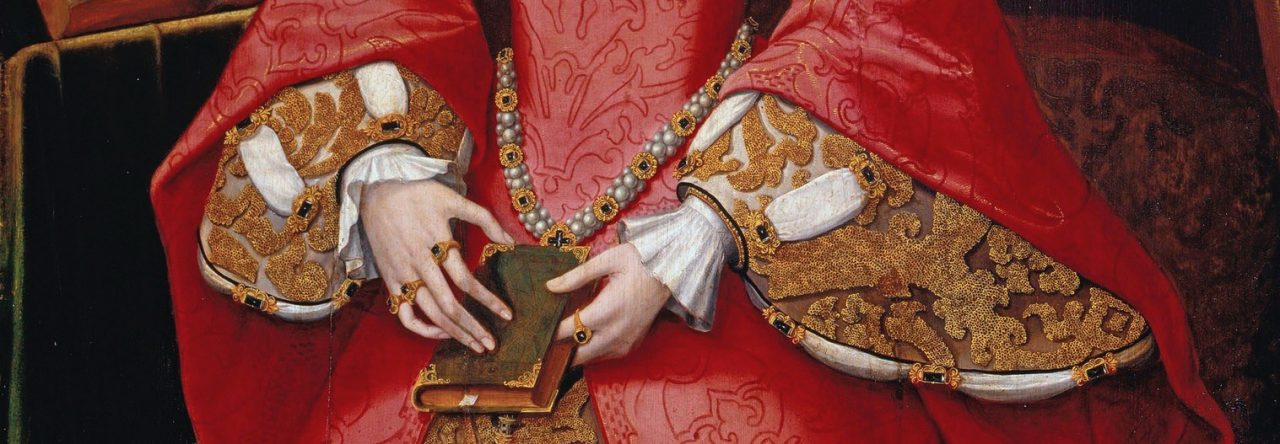While it is fairly common to find women’s ownership inscriptions in Bibles, Psalters, and other religious and devotional works, it is less common to find them in works of history, which is one of the reasons that Elizabeth Hamby’s copy of John Weever’s Ancient Funerall Monuments is so interesting.

She inscribed the book along the top edge of the title page: “Elizabeth Hamby her booke i660.” Hamby is one of the many women who, to use Paul Morgan’s words, “resist[s] identification,” but her more distinctive surname may yet guide us to a definitive answer. One possibility is that she was the elder Elizabeth Hamby of Lamberhurst, Kent mentioned in a March 13, 1678 entry for Allegations for Marriage Licenses . . . Issued by the Vicar-General of the Archbishop of Canterbury, 1660 to 1679 [1].

Given that the inscription in the Weever is dated 1660 and that another text places the younger Hamby’s age at marriage around seventeen, we can safely assume that the mother and not the daughter was the signer of the book [2].


As for John Weever, he is perhaps best remembered as the author of the 1599 Epigrammes in the Oldest Cut, and Newest Fashion. The book contains, among others, an epigram upon Shakespeare in Shakespearean sonnet form, which some scholars believe suggests that Weever read some of Shakespeare’s sonnets when they still circulated only in manuscript form. Ancient Funerall Monuments is the result of Weever’s extensive travels across England, Scotland, Italy, and Frances over a period of around thirty years to collect information on funerary monuments. Weever was most interested in the actual inscriptions on the monuments and less with their heraldic or architectural features, though there are a small number of illustrations within the book.


Hamby’s copy of the text appears to retain its original calf binding (albeit rebacked), and other evidence within the book (“three neat early ink ownership names to first three leaves”) might provide further clues about where Hamby obtained it and how it may have left her possession.
Source: Book offered for sale by Lyppard Books, 3/7/20. Images used with permission.
Further Reading
[1] Armytage, George J., ed. Allegations for Marriage Licenses Issued by the Dean and Chapter of Westminster, 1558 to 1669; Also, for Those Issued by the Vicar-General of the Archbishop of Canterbury, 1660 to 1679. (London: The Harleian Society, 1886), 276.
[2] Foster, Joseph, ed. London Marriage Licenses, 1521–1869 (London: Bernard Quaritch, 1887), 263–64.

This week during a guided tour of the Bodleian library my eye was inexplicably drawn to one book among thousands on the shelves. It was Weever’s Funeral Monuments. I realised it was by John Weever, the nephew of my 11th great grandfather Henry Butler of Rawcliffe. Sometimes genealogy can bite you when you least expect it.
LikeLiked by 1 person
What a lovely bit of serendipity!
LikeLike